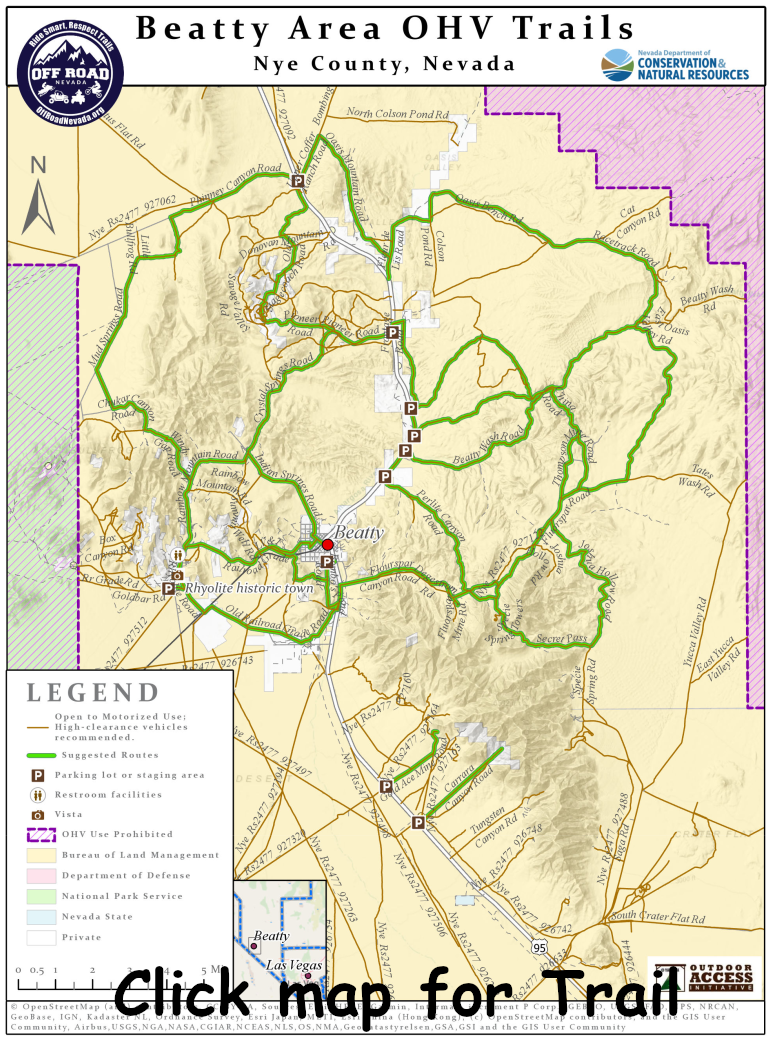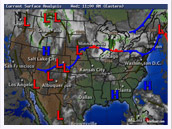
Beatty has long been known as the Gateway to Death Valley, and this entrance to the National Park has exciting offerings for all your senses...and your imagination too! Among the sights and senses you can experience on the 45 mile trip into the valley are:
OF SPECIAL INTEREST...
Desert Wildflowers will begin to appear sometime around mid February...If the mid Winter and early Spring brings
some rain. Last year's rainfall was barely adequate. So if you are fond of Mother Nature's Spring time Extravaganza,
Pray for RAIN! As winter flows into spring park rangers will begin to give regular Wild Flower Updates.
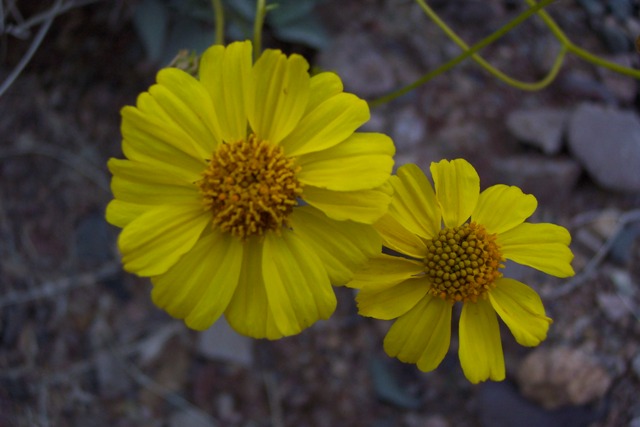
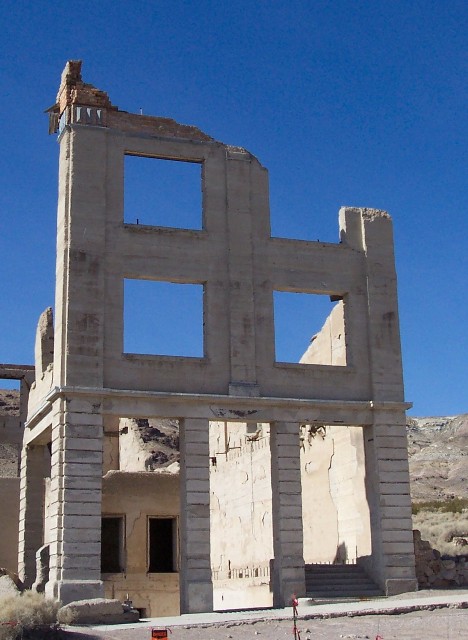 RHYOLITE—(four miles West of Beatty on Hwy 374) Boom to bust, the story of many early mining towns in Nevada run about the same, but Rhyolite is quite the exception. It certainly boomed and it definitely busted, but what remains of what could-have-been is a must-see for any visitor to Beatty. Just four miles west of Beatty, Rhyolite was born in 1905, when samples of gold-laced rock were found in the Bullfrog Mining District. Such a discovery resulted in the usual real estate boom.
RHYOLITE—(four miles West of Beatty on Hwy 374) Boom to bust, the story of many early mining towns in Nevada run about the same, but Rhyolite is quite the exception. It certainly boomed and it definitely busted, but what remains of what could-have-been is a must-see for any visitor to Beatty. Just four miles west of Beatty, Rhyolite was born in 1905, when samples of gold-laced rock were found in the Bullfrog Mining District. Such a discovery resulted in the usual real estate boom.
In fact, Rhyolite reached its peak in 1907, with an estimated 8,000-10,000 residents. But even more remarkable than the subsequent 
population spurt was the potential Rhyolite had — and embraced – to become the next Nevada metropolis. Built of
stone and concrete, the town had three-story office buildings, banks, churches, an opera house,
hotels, a school, dozens of streets, all complete with plumbing, electricity and telephone service. The town even had a stock exchange and gained the
attention of investors in New York and San Francisco, as stock promoters sold speculative shares in Rhyolite ventures. Not
to mention the red light district...
How could a town that seemed set to stand the test of time, crumble to the ghost town status it proclaims today? Rhyolite
has been likened to “the culmination of the gold rush era.” Those who had missed out on earlier booms
was not going to let this one pass them by.Odyssey of a Ghost Town Explorer, Chapter 2 Nevada Magazine Article.
While you are here, be sure to visit the famous Kelly Bottle House, Goldwell Open Air Museum and Historic Rhyolite
Train Depot.
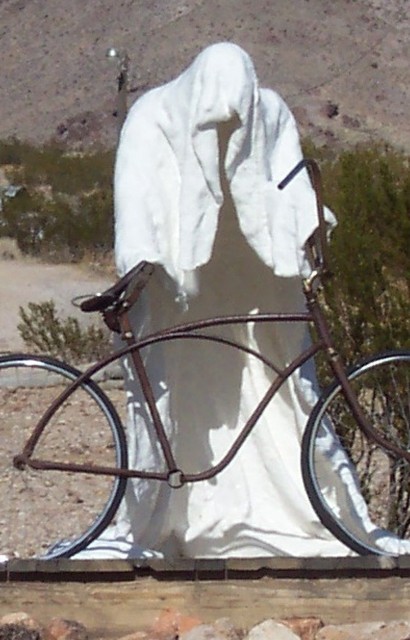
Goldwell Open Air Museum—You’re in the middle of the desert, on your way to visit the area’s premier ghost town (Rhyolite), and suddenly off to the left you see a towering woman and a series of ghostly forms. This is the Goldwell Open Air Art Museum featuring the Painted Lady, a ghostly representation of the Last Supper, a ghostly bike rider, a “desert flower” and others. While you might think that this is a strange location for a modern art Sculpture garden, each piece has a tie with the history of the area—even the penguin following the miner! Goldwell Open Air Museum Nevada Magazine Article
The mining Tunnel—(Just past Death Valley mile post 14) You will find an abandoned tunnel in a rock outcropping on the right, a few short feet from the road. Stop, get out your flashlight, and explore! Less than a hundred feet long the tunnel is tall enough for most tall people to stand erect, the floor is flat, and there are no holes. What the miner was seeking is something of a mystery, but the tunnel shows that he was an experienced miner. Be sure to watch for local inhabitants and give them room--they prefer solitude! The National Park has deemed this mining tunnel to be unsafe and you can no longer enter it. However, because of its length, you can still use your flash light or the flash on your camera to see into the tunnel.
Hell’s Gate—16 to 19 miles from Beatty (on Hwy 374 beginning at approximately Death Valley Mile Post 10). Imagine traveling in a wagon and coming out of the canyon to be hit with a wall of heat that is like opening an oven door. You can experience this today by opening your car windows and sticking your hand out beginning at about 16 miles from Beatty. Within the next mile or so you should be able to feel the sudden change in temperature! Welcome to Hell’s Gate. When the wind is blowing, as it often does in this area, the temperature change is more gradual with pockets of warmer and cooler air until a short distance before the Hell's Gate Rest Area.
Just around the corner is the Hell’s gate information area and your first spectacular view of Death Valley
opens out in front of you. There are few other locations with such a photographic view of such a large area-be sure to
get a picture or two!
While Beatty is known as the Scenic Gateway to Death Valley there is a wealth of desert experiences awaiting you in the immediate Beatty area. You can spend mornings exploring the desert and old mining communities, then escape the afternoon heat in the local shops and casino. Here are some possibilities:
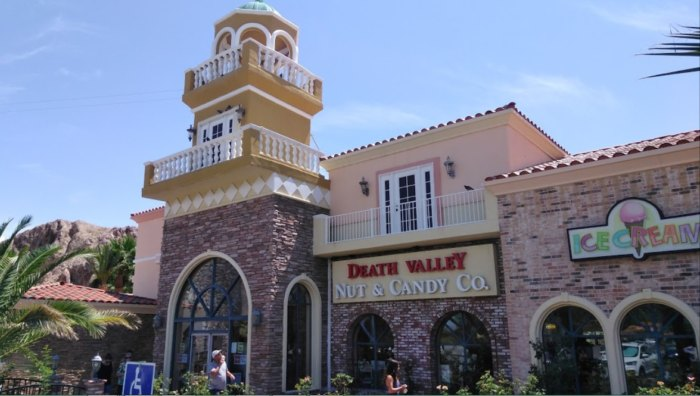
Death Valley Nut & Candy Co.is quite the attraction. People often stop at this delightful shop on their
way to the Death Valley National Park and are pleasantly surprised by how amazing it actually is. It is often considered the biggest
and best candy store in the state and you'll find it in Beatty, Nevada. This candy shop is one of those must-visit destinations for every
traveler, especially if you have a sweet tooth. Boasting aisles upon aisles of delicious candy like chocolates, gummies, taffy, bubble
gum…you name it and they have it. Also inside you will find ice cream, coffee, jerky, sandwiches, toys and unique items.
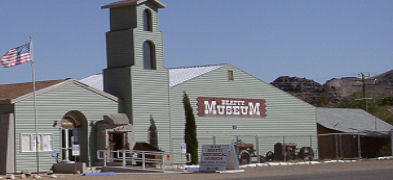 BEATTY MUSEUM--The Beatty Museum and Historical Society that
you will visit today is only the latest in what seems like an ever evolving effort to preserve the history of the town,
the county, and the Bullfrog Mining District. Began by three women of Beatty, who had “played in Rhyolite and
roamed the hills of the Bullfrog Mining District,” the first museum, established in 1995, was just a small cottage.
The collection of documents, books, photos and other artifacts has grown into its current home on Beatty’s Main
Street. The latest edition to the museum is an outdoor display of equipment used in the old mining district. The Beatty
Museum and Historical Society is open Monday through Sunday, from 10 AM to 4 PM. Phone: 775-553-2303. Follow the link
above to visit the Beatty Museum site.
BEATTY MUSEUM--The Beatty Museum and Historical Society that
you will visit today is only the latest in what seems like an ever evolving effort to preserve the history of the town,
the county, and the Bullfrog Mining District. Began by three women of Beatty, who had “played in Rhyolite and
roamed the hills of the Bullfrog Mining District,” the first museum, established in 1995, was just a small cottage.
The collection of documents, books, photos and other artifacts has grown into its current home on Beatty’s Main
Street. The latest edition to the museum is an outdoor display of equipment used in the old mining district. The Beatty
Museum and Historical Society is open Monday through Sunday, from 10 AM to 4 PM. Phone: 775-553-2303. Follow the link
above to visit the Beatty Museum site.
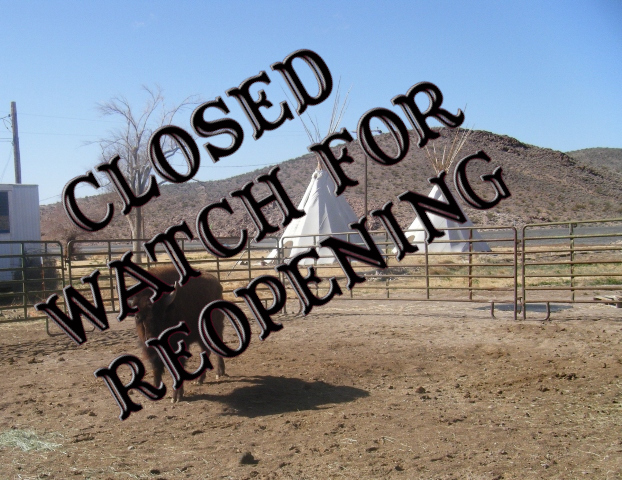
Bailey’s Hot Springs, a former railroad depot (once known as Hicks Hot Springs), was built around 1905. In 1907 Bailey’s became a watering stop for the Bullfrog-Goldfield line, and the first baby born in the district, a little girl, was born here. Today there are three private bath houses available, seven days a week with temperatures ranging from 100 to 108 degrees. There is also a RV park on site with 14 RV spaces. They have an area where two buffalo and llama's graze. Don't worry, a shelter is provided for them all year. Phone: 775-553-2395
 Beatty Burros--These real-life Eeyores were brought to the desert in the mid-19th century by mining prospectors for carrying loads
and riding. Descended from Mediterranean stock brought from Mexico, these sturdy animals are well suited to the climate and terrain. They worked
hard hauling daily water and supplies to mining camps, and even worked underground. After the mining booms and frenzy died, burros were out of a
job. Obsolete, many were turned loose to roam the desert. These wonderful creatures can be seen roaming in and around Beatty and Rhyolite.
Beatty Burros--These real-life Eeyores were brought to the desert in the mid-19th century by mining prospectors for carrying loads
and riding. Descended from Mediterranean stock brought from Mexico, these sturdy animals are well suited to the climate and terrain. They worked
hard hauling daily water and supplies to mining camps, and even worked underground. After the mining booms and frenzy died, burros were out of a
job. Obsolete, many were turned loose to roam the desert. These wonderful creatures can be seen roaming in and around Beatty and Rhyolite.
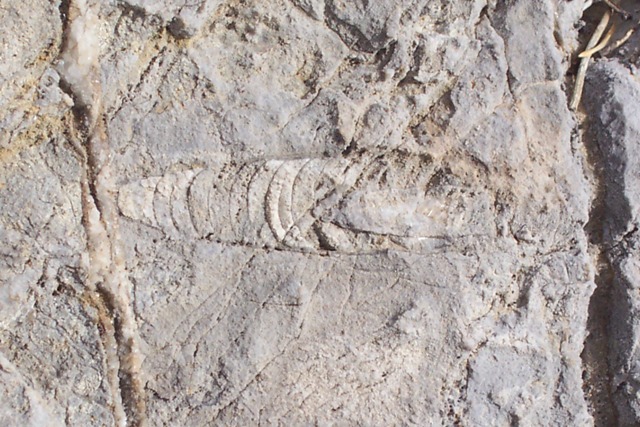 Beatty Mudmound--From a distance this fascinating outcropping of limestone, about 2 miles south and east of
town is simply an out cropping of pale gray rock. But once up close and personal, the casual rock hound can find a wealth of
excellently preserved fossil remains some 480 million years old: sponges, tiny crustaceans-related to barnacles, gastropods,
and brachiopods as well as others. These Ordovician mudmounds/ bioherms were, in effect, huge underwater mud dunes, able to
trap sediments driven by the prevailing sea currents. The mudmound near Beatty probably developed scores of miles from the
ancient Ordovician shoreline in seawater shallow enough to allow monstrous algae mats to flourish and enormous quantities of
animal life to thrive along the flanks of the mound.
Beatty Mudmound--From a distance this fascinating outcropping of limestone, about 2 miles south and east of
town is simply an out cropping of pale gray rock. But once up close and personal, the casual rock hound can find a wealth of
excellently preserved fossil remains some 480 million years old: sponges, tiny crustaceans-related to barnacles, gastropods,
and brachiopods as well as others. These Ordovician mudmounds/ bioherms were, in effect, huge underwater mud dunes, able to
trap sediments driven by the prevailing sea currents. The mudmound near Beatty probably developed scores of miles from the
ancient Ordovician shoreline in seawater shallow enough to allow monstrous algae mats to flourish and enormous quantities of
animal life to thrive along the flanks of the mound.
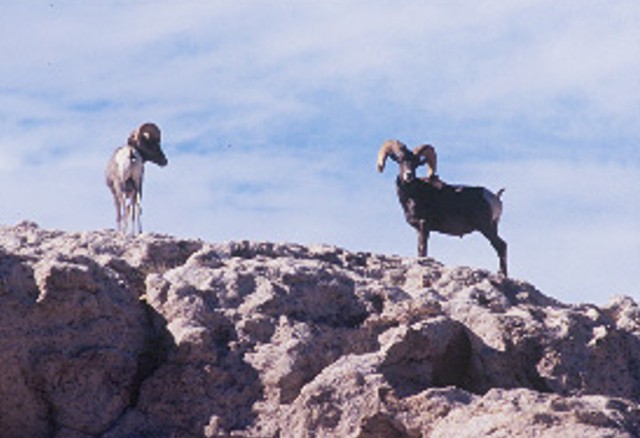
The Swiss Cheese Outcropping-- This unusual rock formation can be found a few miles outside of Beatty, near the Mudmound. Filled with holes this outcropping is an interesting place to explore. You might choose to camp in the area protected by this formation, and you just might be treated to a sighting of a bighorn sheep.
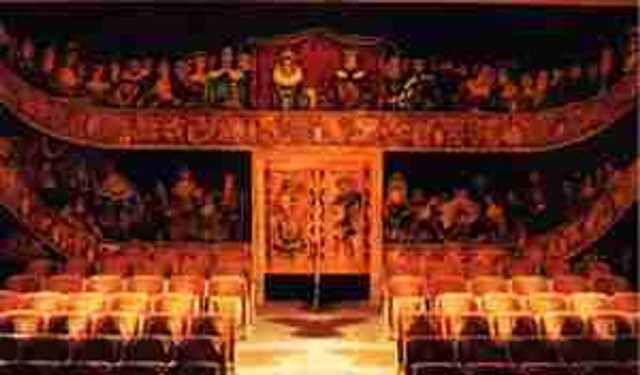 Marta Becket’s Amargosa Opera House
is an adventure that encompasses dance, theater, and art in a way that you may see nowhere else in the world. An entire
audience adorns the walls, filled with characters who might have attended an opera back in the 16th century. Even the ceiling
boasts a mural with cherubs, clouds, music playing ladies, and white doves. Reservations are suggested for theatrical events,
but even if you cannot make a show, the Opera House itself is worth a visit. Phone: 760-852-4441
Marta Becket’s Amargosa Opera House
is an adventure that encompasses dance, theater, and art in a way that you may see nowhere else in the world. An entire
audience adorns the walls, filled with characters who might have attended an opera back in the 16th century. Even the ceiling
boasts a mural with cherubs, clouds, music playing ladies, and white doves. Reservations are suggested for theatrical events,
but even if you cannot make a show, the Opera House itself is worth a visit. Phone: 760-852-4441
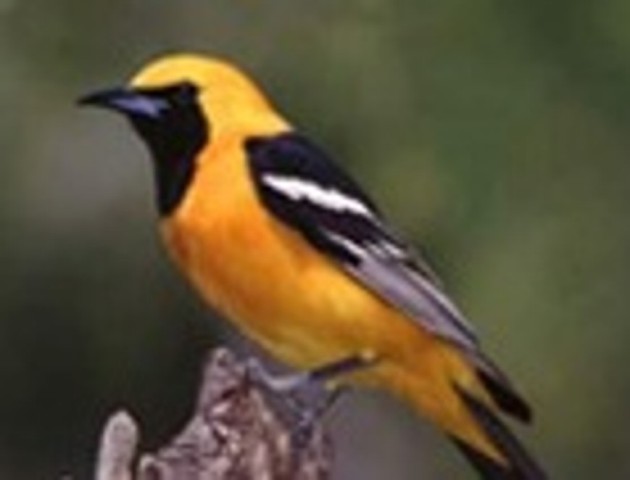 BIRDING--A true
oasis from the harsh environments of the Mojave and Great Basin Deserts — the trees, wetlands and open spaces
along the Amargosa River also give habitat to year-round resident birds and nesting seasonal birds, regularly supporting
21 species that have been identified as NV Partners in Flight conservation priorities. Surveys have recorded some 100
species of Neotropical migrants that make use of this area during spring or fall migration. The area also hosts a significant
number of single-species concentrations, with more than 25,000 individuals from four groups of the wood warbler family
passing through each spring. For optimal viewing, birders should check out areas along the Amargosa River, Species
Springs, Vanderbilt Springs, Ash Meadows National Wildlife Park and Indian Springs.
BIRDING--A true
oasis from the harsh environments of the Mojave and Great Basin Deserts — the trees, wetlands and open spaces
along the Amargosa River also give habitat to year-round resident birds and nesting seasonal birds, regularly supporting
21 species that have been identified as NV Partners in Flight conservation priorities. Surveys have recorded some 100
species of Neotropical migrants that make use of this area during spring or fall migration. The area also hosts a significant
number of single-species concentrations, with more than 25,000 individuals from four groups of the wood warbler family
passing through each spring. For optimal viewing, birders should check out areas along the Amargosa River, Species
Springs, Vanderbilt Springs, Ash Meadows National Wildlife Park and Indian Springs.
SPECIES SPRINGS is another watering hole that is in Tarantula Canyon about five miles southeast of Beatty.
VANDERBILT SPRINGS and Bombo’s Pond are south of town, right next to Highway 95. Hidden by the tamarisk trees, this watering hole is enjoyed by many for catch-and-release fishing.
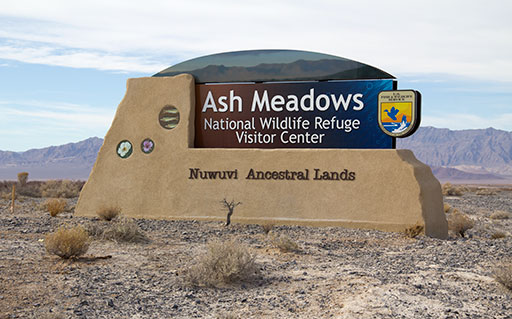 Ash Meadows National Wildlife Refuge
--The 23,000-acre Ash Meadows National Wildlife Refuge is part of the larger, which also includes:
the, the Moapa Valley National Wildlife Refuge, and the Pahranagat National Wildlife Refuge.Ash Meadows is within the Amargosa Desert,
of the Mojave Desert ecoregion. The Amargosa River is a visible part of the valley hydrology, and has seasonal surface flow passing
southwards adjacent to the preserve, to later enter Death Valley.Ash Meadows provides a valuable and unprecedented example of desert
oases habitats that have become extremely uncommon in the southwestern deserts. The refuge is a major discharge point for a vast
underground aquifer water system, reaching more than 100 mi (160 km) to the northeast. Water-bearing strata come to the surface
in more than thirty seeps and springs, providing a rich, complex variety of mesic habitats. Virtually all of the water at Ash Meadows
is fossil water, believed to have entered the ground water system tens of thousands of years ago. Numerous stream channels and wetlands
are scattered throughout the refuge. To the north and west are the remnants of Carson Slough, which was drained and mined for its peat
in the 1960s. Sand dunes occur in the western and southern parts of the refuge.
Ash Meadows National Wildlife Refuge
--The 23,000-acre Ash Meadows National Wildlife Refuge is part of the larger, which also includes:
the, the Moapa Valley National Wildlife Refuge, and the Pahranagat National Wildlife Refuge.Ash Meadows is within the Amargosa Desert,
of the Mojave Desert ecoregion. The Amargosa River is a visible part of the valley hydrology, and has seasonal surface flow passing
southwards adjacent to the preserve, to later enter Death Valley.Ash Meadows provides a valuable and unprecedented example of desert
oases habitats that have become extremely uncommon in the southwestern deserts. The refuge is a major discharge point for a vast
underground aquifer water system, reaching more than 100 mi (160 km) to the northeast. Water-bearing strata come to the surface
in more than thirty seeps and springs, providing a rich, complex variety of mesic habitats. Virtually all of the water at Ash Meadows
is fossil water, believed to have entered the ground water system tens of thousands of years ago. Numerous stream channels and wetlands
are scattered throughout the refuge. To the north and west are the remnants of Carson Slough, which was drained and mined for its peat
in the 1960s. Sand dunes occur in the western and southern parts of the refuge.
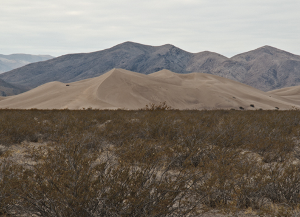
Big Dune- -is a formation of sand dunes, cresting approximately 300 feet (91 m) above surrounding terrain. The dune formation and surrounding land is administered by the BLM and is open to motorized and non-motorized recreational uses. Big Dune is accessible from Valley View Road, approximately 2.5 miles (4.0 km) south of U.S. 95.
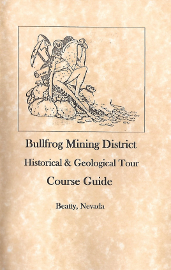 DESERT ADVENTURES OFFROADING...
Think you're tough? These proving grounds put the extreme in extreme possibilities! Prepare to get up close and personal with a whole new
level of punishment when you take it up against the most hostile and demanding rival you'll ever encounter. Beatty, Nevada. Maybe you like
rock climbing, we have plenty of areas for you. If you are more into Mountain Biking or hiking we have a huge trail system, both for the
beginner and for the experienced, the Beatty Nevada Trails has a course for you. Visit www.Trails-OV for more information. If you are more
into the Dirt Bike, ATV or Jeep Adventures, check out the Bullfrog Historical Mining District Course. This is a 42.7 mile course which
features the History and Geology of the Bullfrog Mining District. The Map and Course Guide Booklets are for sale at the Beatty Chamber
of Commerce, The Beatty Museum and the VFW for $10.00.
DESERT ADVENTURES OFFROADING...
Think you're tough? These proving grounds put the extreme in extreme possibilities! Prepare to get up close and personal with a whole new
level of punishment when you take it up against the most hostile and demanding rival you'll ever encounter. Beatty, Nevada. Maybe you like
rock climbing, we have plenty of areas for you. If you are more into Mountain Biking or hiking we have a huge trail system, both for the
beginner and for the experienced, the Beatty Nevada Trails has a course for you. Visit www.Trails-OV for more information. If you are more
into the Dirt Bike, ATV or Jeep Adventures, check out the Bullfrog Historical Mining District Course. This is a 42.7 mile course which
features the History and Geology of the Bullfrog Mining District. The Map and Course Guide Booklets are for sale at the Beatty Chamber
of Commerce, The Beatty Museum and the VFW for $10.00.
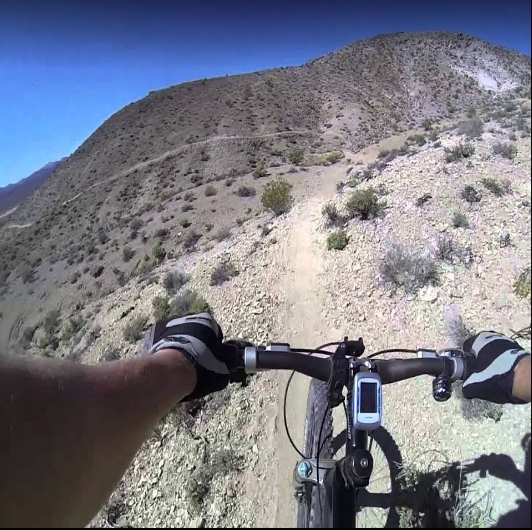
Spicer Ranch Trails- - is a 120 Acre working ranch with cows, horses and wild burro’s. The ranch has 2 large pastures with green grass and numerous fresh water ponds. These ponds provide habitat for the Amargosa Toad. The ranch is open to the public year-around for mountain biking and hiking. There is a large public parking lot and kiosk with maps of area trails. The first seven miles of trails on Spicer Ranch consist of four trails: the Spicer Ranch Trail (2.5 miles), the Storm Trail (.75 miles), the Southpond Mountain Trail (1 mile) and the Dynamite Trail (2 miles). The trails range from easy to difficult. There are another 30 miles of trail opened on BLM land.

